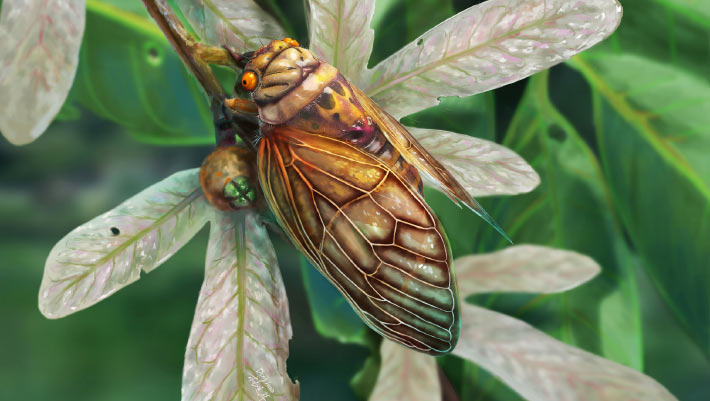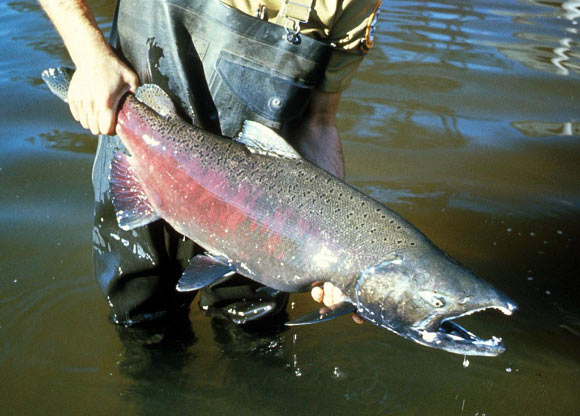Cicadidae is one of the most species-rich insect families today. However, compared to the number of living species, fossil records of Cicadidae are extremely limited. The newly-discovered species, Eoplatypleura messelensis, not only represents one of the earliest known Cicadidae fossil from the Eurasian continent, but also the oldest confirmed record of the subfamily Cicadinae worldwide to date.
Eoplatypleura messelensis lived in Europe approximately 47 million years ago (Eocene epoch).
“The family of true cicadas (Cicadidae) is one of the most species-rich insect groups today,” said Dr. Sonja Wedmann, a paleontologist at the Senckenberg Forschungsinstitut und Naturmuseum Frankfurt/Main.
“Nevertheless, there are only very few fossil finds compared to the large number of modern species.”
“Within this family, the Platypleurini group is particularly striking — it has a wide distribution and contains many different species with special characteristics.”
“For the first time, we have now described a fossil from this group of cicadas.”
Two fossil specimens of Eoplatypleura messelensis were found at the Messel Pit, an oil shale open-cast mine that lies 10 km northeast of Darmstadt in the German state of Hesse.
“The new Messel fossil is characterized by a compact head with inconspicuous compound eyes and broad forewings with a noticeably curved leading edge,” said Dr. Hui Jiang, a paleontologist at the Senckenberg Forschungsinstitut und Naturmuseum Frankfurt/Main, Charles University, the Universität Bonn and Nanjing Institute of Geology and Palaeontology.
“Although the fossil is a female, its classification suggests that males of this group were capable of producing loud mating calls.”
Eoplatypleura messelensis, adult female. Image credit: Senckenberg Forschungsinstitut und Naturmuseum Frankfurt/Main.
The ancient insect had a body length of 2.65 cm and a wingspan of 6.82 cm, and is notable for its expansive and strikingly patterned wings.
“These patterns are similar to those of modern cicada species of the Platypleurini group, which live in woods and scrubland,” Dr. Jiang said.
“Given the subtropical vegetation in the Messel area around 47 million years ago, the coloration could have fulfilled a similar ecological function — for example as camouflage.”
“Eoplatypleura messelensis is one of the oldest known representatives of today’s true cicadas in Eurasia and represents the earliest record of the subfamily Cicadinae worldwide,” Dr. Wedmann said.
“It is also the first described buzzing cicada from the Messel Pit.”
“The discovery not only expands our knowledge of the fauna of the Messel Pit but also closes an important gap in the history of cicadas in the Eocene.”
“In the future, Eoplatypleura messelensis could serve as an important chronological reference for genetic studies on the evolutionary history of these animals and provide new insights into the origin and spread of the Platypleurini.”
The team’s paper was published on April 29, 2025 in the journal Scientific Reports.
_____
H. Jiang et al. 2025. Sounds from the Eocene: the first singing cicada from the Messel Pit, Germany. Sci Rep 15, 12826; doi: 10.1038/s41598-025-94099-7




























